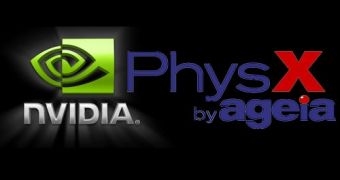Rumor has it that Nvidia will not make its customers buy an Ageia card in order to enjoy all the benefits of its brand-new physics processor. The physics coprocessor is reported to make its way on the graphics card's VGA chip.
Nvidia's fourth-quarter earnings report session came with further details about the future of the hardware physics processing unit from Ageia. According to Jen-Hsun Huang, Nvidia chief executive, the company will port the Ageia codebase to its GeForce graphics processors through the CUDA technology, which would allow them to run on a normal GPU.
"Physics processing and the AGEIA engine happens to be extremely computationally intensive," said Jen-Hsun Huang. "It requires just a lot of processors to deliver the type of real time performance that the games need. Our strategy is to take the AGEIA physics engine, which has been integrated into tools and games all over the world, and we're going to port the AGEIA physics engine onto CUDA," Huang added.
The CUDA technology has been shipped into more than 50 million graphics processors in the GeForce 8 series. According to the company's estimations, it will ship some hundred million more in the next years. If Nvidia manages to port the physics engine on top of the CUDA framework, then the accelerated physics will bring a lot of realism for the upcoming gaming titles.
"Our expectation is that this is going to encourage people to buy even better GPUs. It might and probably will encourage people to buy a second GPU for the SLI slot and for the highest end gamers, it will encourage them to buy three GPUs, potentially two for graphics and one for physics or one for graphics and two for physics, or any combination of -- you know, any dynamic combination thereof," Huang said.
Huang also stated that the physics technology developed by Ageia will be able to run on a number of cores inside a normal GPU as well as inside an idle graphics processor.

 14 DAY TRIAL //
14 DAY TRIAL //